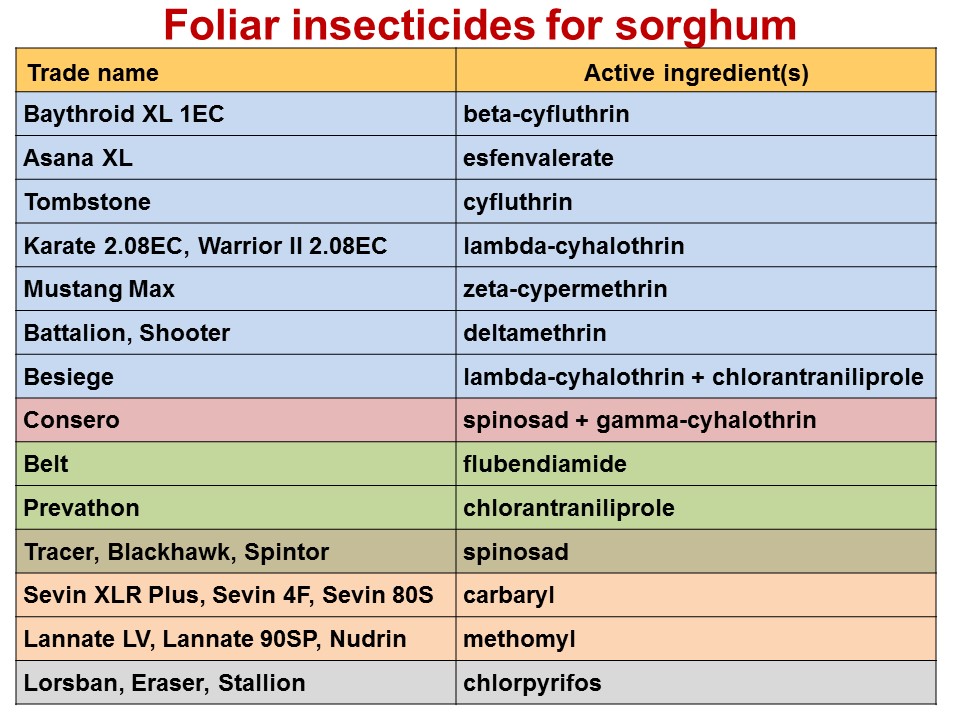We are getting reports of a few worms in young sorghum heads. ‘Headworms’ are key insect pests of sorghum in Virginia and can include a complex of species but primarily corn earworm and fall armyworm. In years with heavy corn earworm moth flights and infestations in soybean and peanut, sorghum is also at high risk of being infested. Although we are experiencing a generally weak corn earworm moth flight so far this year, because sorghum is such an attractive host, fields should be checked.
Stay in touch with the status of the corn earworm flight via the new Virginia Ag Pest and Crop Advisory Blog (http://blogs.ext.vt.edu/ag-pest-advisory/). You can view postings at this website, or if you want to receive the weekly advisories via email, go to the Blog site and sign up.
So what are the worm thresholds for sorghum, what is the best way to scout, and what products are labeled for control—all good questions.
We have learned that the best way to sample sorghum heads for worms is with a 5-gal bucket, preferably white. Relying on visual inspection of heads does not work well because you cannot easily see the small worms or even big ones if they bury themselves deep into the heads. Bending the heads into the bucket and vigorously shaking/slapping them does the job—dislodges the worms into the bucket. Worm infestations are not always uniformly distributed across a field so we recommend sampling 10 heads in 10-20 different locations in a field.
Because of differences in variety, planting date, soil moisture, and other factors, different fields may have heads at different maturity stages so keep this in mind and focus scouting efforts on fields with heads in these most susceptible stages—from soon after flowering when seeds begin to form until seed are hardened.
The most common threshold across the southern and central states is to treat when worms average 2 or more per head. This is a good starting point.
A final note, a broadcast spray pattern is probably the least effective way to achieve a good worm control. Treatments will be more effective if you can set up a boom with a nozzle over the row, or multiple nozzles to direct the spray to heads, only, and deliver 12-15 gal per acre. The table below provides a fairly comprehensive list of insecticides labeled for use in sorghum. We have generally achieved the best control when we have included a non-pyrethroid like Belt, Prevathon, Besiege, or Blackhawk. Check labels for rates and other use information.


